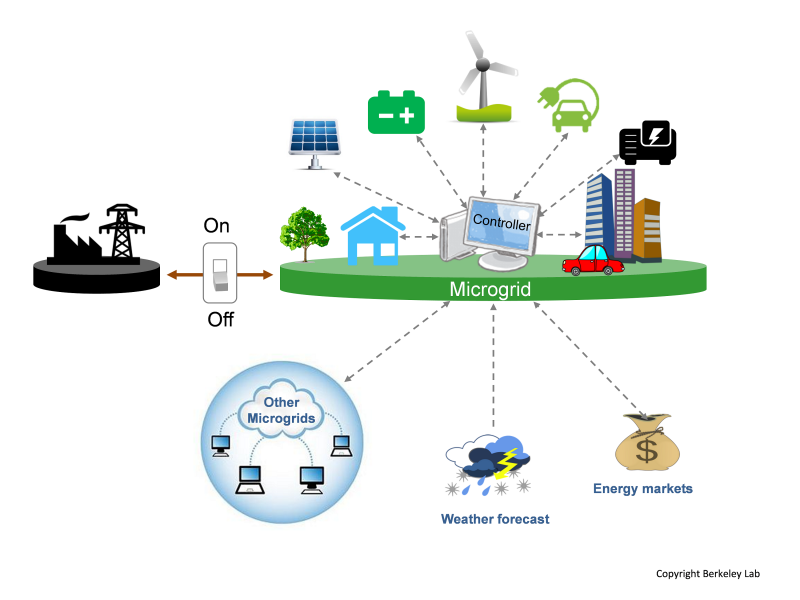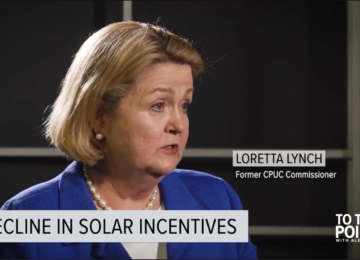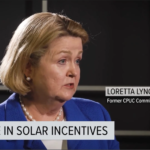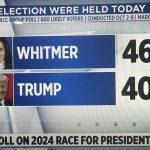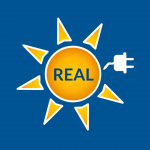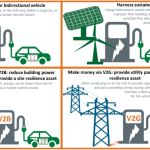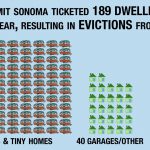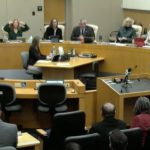It’s official. California is falling behind other states as a climate leader.
Earlier this month, the first Think Microgrid Scorecard was released, rating 50 states on five categories: deployment, policy, resilience, grid services, and equity.
California received a ‘C’ on all of the categories except for policy, where it received a ‘D.’
A C grade was defined as exhibiting, “only limited or passive program and pilot-level activity with little to demonstrate a coherent, coordinated implementation plan.
Four states Colorado, Texas, Hawaii, and Connecticut were graded ahead of California, receiving an overall grade of B. This was defined as having, “established precedent-setting market design components, policy reform and program solutions that include broad stakeholder engagement and clearly articulated goals for coordinated regulatory and agency activity.”
Cameron Brooks, Executive Director of Think Microgrid, explained the reasoning behind the score, “California earned only a ‘C’ because we don’t see a coherent, coordinated implementation plan for microgrids. To the contrary, it seems that many of California’s policies with regard to microgrids and DER (Distributed Energy Resources) are internally inconsistent.”
For those who have followed recent developments in renewable energy at the California Public Utilities Commission (CPUC) and the state legislature, this grade won’t come as a surprise. For everyone else, it’s probably a rude awakening.
By the state’s own estimation we need to more than double the amount of solar on rooftops in order to meet climate mandates and have a hope of preventing the world from warming past a tipping point.
Yet just last week the CPUC confirmed new rules that will remove the existing financial incentives that have allowed schools, apartments, farms, and many businesses to pay for the cost of installing solar on their roofs. This follows a decision last year that cut the amount that homeowners with rooftop solar are paid for the energy they generate. As a result the amount of new solar installs have fallen by as much as 80% in 2023.
What California does matters. Whether we are doing a good job or not, the world’s climate leaders look to California. That’s why a “D” on microgrid policy is so troubling.
Microgrids and decentralized energy resources are key parts of a future zero carbon, climate resilient energy system. The National Renewable Energy Laboratory defines a microgrid as the following: “A microgrid is a group of interconnected loads and distributed energy resources that acts as a single controllable entity with respect to the grid. It can connect and disconnect from the grid to operate in grid-connected or island mode. Microgrids can improve customer reliability and resilience to grid disturbances.”
The federal Department of Energy backs microgrids as essential. “By 2035, we aim for microgrids to represent essential building blocks of the future electricity delivery system to support resilience, decarbonization, and affordability.
So why is California doing so badly with Microgrids? It’s a question that illuminates problems with the way we regulate the electrical grid, and the power wielded by investor owned utilities in our state.
In 2019, the legislature passed SB 1399, a landmark microgrid bill sponsored by Senator Becker. The stated purpose of the bill was to develop a legal framework for the proliferation and commercialization of microgrids. The CPUC was tasked with developing that framework by December, 2020.
Nearly three years later that rulemaking is ongoing and very few microgrids have been built.
Cameron Brooks is disappointed. “It’s been over 5 years since the California legislature made clear that they view microgrids as a vital part of California’s economy and energy future…. The tariffs developed by the CPUC have not resulted in a single new microgrid, suggesting that the tariff is not responsive to the current market.”
In fact, the Scorecard lists this ongoing proceeding as one of the reasons for the low policy score. In the most recent development in the SB 1339 rulemaking saga, the CPUC has decided to limit public comment on multi-customer microgrids. Only utilities will be allowed to offer input on this important phase of the proceeding.
Brooks said that it seems as if state regulators are aligned against distributed energy. “The tragedy is that the citizens are the ones who suffer and are increasingly vulnerable to an unstable and dangerously aging electric grid…. It’s a story about a state agency that refuses to comply with a law created five years ago to drive the commercialization of microgrids. I’d say that they are sitting on their hands, except that they seem to be using their hands to cover their ears.”
Microgrids, rooftop solar, and distributed energy resources are all related technologies that we as a society need to integrate and utilize if we are to have a chance at staving off the worst effects of climate change. The sticking point is that when fully deployed, all of these technologies cut into the profits of electrical corporations like PG&E.
California needs to decide whether it cares more about protecting utility company profits or protecting the climate.
If it’s the latter, the scorecard offers examples from states who received better scores. Maine, while also receiving an overall ‘C’ was the only state to receive a B or higher on policy. Maine passed legislation that defined microgrids as explicitly distinct from public utilities, while also giving microgrids access to public right of ways. This means that microgrids in Maine will be able to serve multiple customers over multiple properties.
In California and many other states, an ‘over-the-fence’ law prevents energy from being sold across property lines – a key barrier in the deployment of microgrids and DERs.
That’s why the Sonoma Independent supports the Renewable Energy Acceleration Law of 2024 ballot initiative, which would allow solar farms up to 100 acres in size to sell electricity to neighbors and EV charging stations in a two mile radius.
Without new policy legislation, even Texas will continue beating California on microgrids. There, a 2023 law created a $11.8 billion dollar grant to fund behind-the-meter microgrid projects. Colorado, Connecticut, and Hawaii also show promising steps forward.
If California is going to be a climate leader, it needs to catch up. That means standing up to the utility companies and the CPUC.


